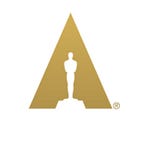Why Collaboration Is Hard And How We Used It To Make “Big Hero 6”
by Chris Williams
We knew from the onset Big Hero 6 was going to be uniquely challenging.
It was going to be an emotionally ambitious story.
We knew there were a lot of disparate elements we were going to have to pull together into a cohesive whole, so we relied on methods we use at Disney that emphasize collaboration and iteration.
A primary responsibility of the director is to come up with a strong story, but you are going to be surrounded by talented, amazing people who are going to help you.
So, one of the important things you can do is reach out and pull the best ideas out of the people that are assembled.
A collaborative environment is important, but that kind of environment can be difficult to achieve in reality, because in some ways, it fights human nature.
We all want to be told, all the time, that all of our ideas are amazing, and every thought we have is gold. But if that’s all you ever get, the story’s not going to get any better.
You have to fight the human desire for affirmation and you have to actively foster an environment where people feel comfortable disagreeing with you — and disagreeing with each other — if that’s how they feel.
We want honest and open debate because you can’t overemphasize that when it comes to the story, conflict is good and disagreement is good.
Because in that collision between two contradictory ideas, often a third and better idea will emerge that would never have seen the light of day had there not been a vigorous discussion.
That’s what we want in our story rooms.
The flip-side of that is, even when you disagree, you have to be respectful of other peoples’ points of view because when you talk story you make yourself very vulnerable.
When you talk about story you’ll end up in the story room for hours and days on end talking about things you love, things you hate, things that make you sad, and you’re pulling from your own life experience.
When you offer an idea, to some extent, you are saying, “This is who I am,” and that line between who you are and what you do begins to become very fuzzy.
It’s important to find that place where you can be honest and open but never let things get personal.
People who work in these kinds of environments — the writers and the storyboard artists — have to have a very thick skin. Often your job is to go off on your own, work on a scene, and hopefully create something you like and think serves the film. Something that you become very invested in.
Then, after one or two weeks of work you come back into the story room and you have to pitch it.
You have to pitch it with passion and conviction and you have to believe in it.
Then you have to turn the switch, sit down and listen to people whose job it is to judge that idea. They’ll tell you what they like, what they didn’t like, and what to do differently.
And you have to be receptive to these points of view — even if at first you don’t agree.
Because in that conflict you may find that third and better idea.
Chris Williams is the co-director of Big Hero 6.
This is an excerpt from the Academy’s Deconstructing Big Hero 6 that included a conversation with the film’s directors Don Hall and Chris Williams, producer Roy Conli, visual effects supervisor Kyle Odermatt, head of animation Zach Parrish and director of cinematography lighting Adolph Lusinsky.
